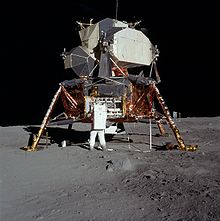
Apollo 11 Landing on the Moon
On July 20th, 1969, the Apollo 11 landed on the Moon. This feat was extraordinary for many reasons, one of which is the accuracy of the calculations which allowed the spacecraft to reach its intended target.
What would have happened if the calculations weren’t exact, but rather a close approximation? Would a 1% margin of error made a big difference? How about a 10% or even a 25% margin of error?
Selling or buying a house isn’t as complicated as landing on the Moon
But… wouldn’t you want to have the most accurate information regarding the value of a house? What if the value that is being quoted is off by 10% or even 25%?
Let’s see – if the average home price in Fairfax is around $400,000 , a 10% margin of error would be equivalent to $40,000. A margin of error of $40,000 isn’t insignificant…
Do you know how accurate are Zillow’s Zestimates?
Per their website, the Zestimate margin of error for Fairfax County is one of the lowest in the Country – and it’s 7.1%. Further, their tables report that only 37% of the time are their Zestimates within 5% of the actual house price.
Wow.
That means that each house has a little over a 1/3 chance of being accurately “Zestimated” within 5% of their true value. If we use an average home price of about $400,000, five percent is $20,000… That’s twenty thousand above OR below the actual sales price.
What is the issue with Zillow’s Zestimates?
Is it a problem with their algorithm? Zillow’s “secret formula” (as they call it) is…well, secret. So only they know how it works and what stuff goes in it. But they do employ fancy math wizes called “statisticians” who are constantly fine-tuning their formula. I, personally, don’t think that their secret formula is faulty.
So what is it then, that causes such margin of error?
1. The data is delayed
2. The data is only partial
3. The formula-only approach
1. The data is delayed
One issue with Zillow’s formula is that it uses data is that its based on closed transactions (meaning homes that already sold and in the public records). The issue with public records is that it can take quite a while for them to be updated. In certain cases, when the real estate market moves rapidly, a delay of a few months can mean that the data is quite a bit outdated.
2. The data is only partial
The other issue with using closed transactions exclusively is that one ends up Zestimating the current value of a property with transactions that ocurred, at best, a few months ago. In many markets, this can mean a significant margin of error.
3. The formula-only approach
The third issue that causes the Zestimates’ margin of error is their formula-only approach. The formula itself is most likely quite accurate, but calculating the value of a property is a little bit of science and a little bit of art. The formula can’t make use of the art part to fine-tune its equation.
What do I mean by art? Well, for example, what if the house being Zestimated has a fabulous kitchen, or a great view of the neighborhood pool? The formula has no way of including these very important factors into its calculation.
So how can you get a more accurate value?
You can get a more accurate value by getting a Competitive Marketing Analysis (CMA). A Realtor, while preparing a CMA not only uses closed sales, but also pending and active sales to estimate the value of a property.
Also, when a Realtor estimates the value, it can add that little bit of art needed to arrive at a more accurate estimation. The little bit of art includes elements which directly affect the value off a property (such as a fabulous kitchen, or a view to the neighborhood pool); as well as how the property compares today to its competition.
Zillow knows the limitations of their formula
Zillow knows the limitations of their formula-only based approach and recommends getting a CMA to find out a closer approximation to the value of a home.
As you can see, using Zillow to get an idea of the value of a property will provide, at best, a value with a margin of error of about 7%. For homes in Fairfax County, VA whose average price is around $400,000, this margin of error translates to about plus or minus $28,000.
This margin of error is due to the nature of the data that Zillow uses for its secret formula called a Zestimate – and its formula-based approach to calculating home values. The formula-based approach doesn’t take into consideration factors such as a fabulous kitchen or a wonderful view.
If you want the most accurate value, get a Comparative Marketing Analysis (CMA)
To get a closer approximation to the value of a home, ask a Realtor to provide you with a CMA. The CMA will include more recent data, as well as other features of the home to give you a much better idea of how much a property is worth.
If you are interested in getting a CMA for a home with the unique perspective of its school boundary, contact us. We’ll be happy to help.



 Everybody is welcome to find a home by school boundary. A school boundary
is simply a geographical area, just like a zip code or a postal city.
Everybody is welcome to find a home by school boundary. A school boundary
is simply a geographical area, just like a zip code or a postal city.
 Does anything on this website bug you? Nothing is too small or too big. If there is something we can fix, we'd love to know.
Does anything on this website bug you? Nothing is too small or too big. If there is something we can fix, we'd love to know.

